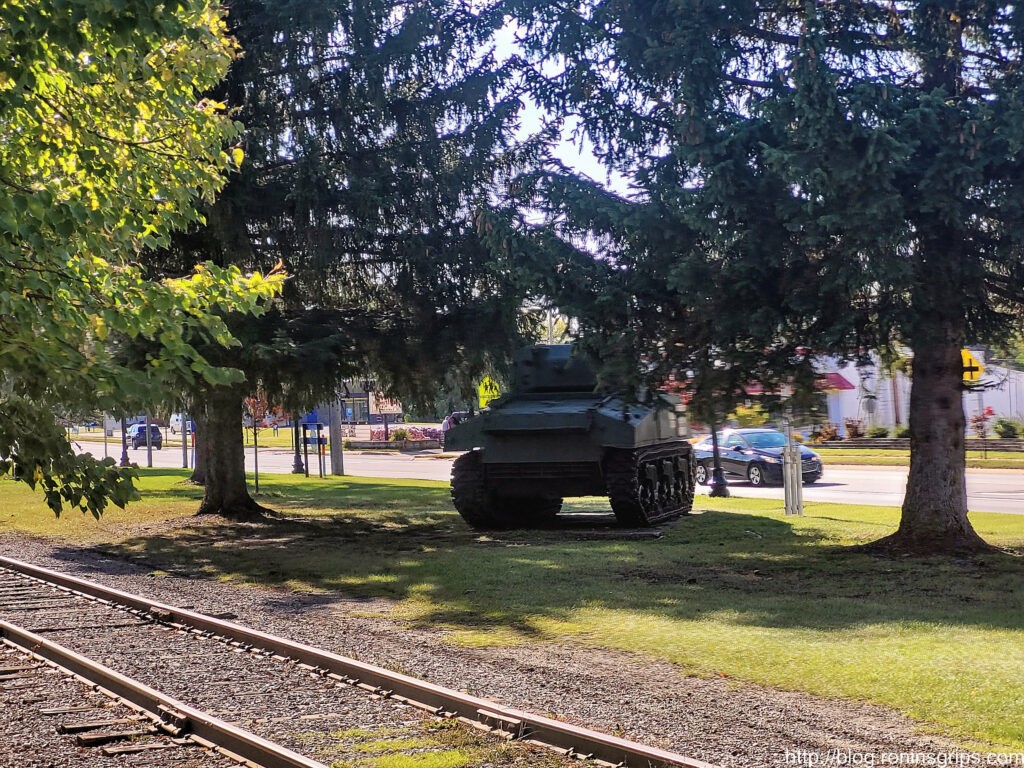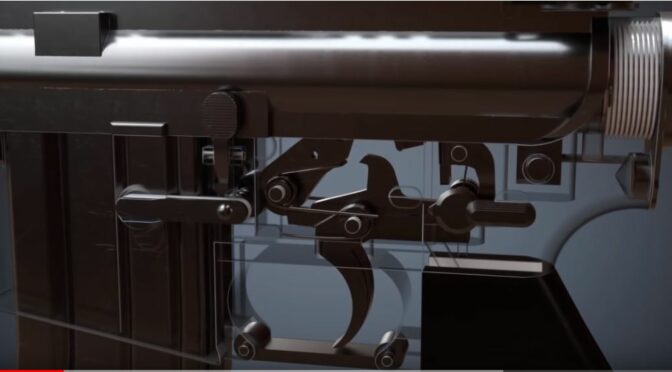As I have written in the past, I am always fascinated my old military equipment located at American Legion Posts, VFWs, cemeteries and so forth. My wife and I have driven on US-131 a number of times over the years and seen a M4 Sherman tank right by the road but have never had the time to stop and take photos until October 2022. We were on our way home and had time to stop and take a few quick photos. Now, weeks later, I did a bit of research and compiled this post.
The tank is a static display for American Legion Post 264 in Mancelona, MI located on the corner of US-131 and State Street in downtown Mancelona – if you are headed North, it’s on the the right hand side of the road just before the intersection.
The tank is a M4A3 Sherman serial number 11755 with a 75mm cannon with a small hatch and dry storage. The smaller hatches were an earlier production design and many were kept in the US for training purposes and did not see battle.
Dry storage models had ammunition racks mounted on vulnerable positions and the rounds could catch fire. Later “wet storage” models moved the racks to the floor in less vulnerable positions and protected them with sealed chambers filled with water and anti-freeze to slow the progression of fire and allow the crew a few more seconds to escape.
The Details
To be honest, I had no idea how many variants to the M4 Sherman were made – it’s stunning actually. This Wikipedia page gives info on the tank in general and this one lists info on variants. I thought this would be a quick post to write but every time I pulled back a layer and got more details that then led to more details. I had to then dig specifically on the tank to read what others had written about it.
So here is the info I could sort out:
- Model: M4A3 small hatch dry storage
- Maker: Ford
- Where: Highland Park Plant
- When: February 1943
- Production: It was one of 1,690 small hatch dry storage M4A3 Shermans made by Ford between June 1942 and September 1943. This variant had the lowest production numbers.
- Serial Number: 11755
- US Registration: 3053910
- B&R Rebuild Stamp: 579
- Engine: Ford GAA V-8 500HP – that engine is really interesting – it’s an all aluminum 1,100 cubic inch 32 valve dual overhead cam 60 degree liquid cooled engine. Everything was geared – no belts or chains – so it was actually very reliable. The design is amazing in my honest opinion.
- Transmission: Synchromesh with 5 speed forward and one reverse
- Max road level sustained speed: 26 mph – I got stats ranging from 21 to 30 mph on this one)
- Fuel type: Gasoline, at least 80 octane
- Fuel Capacity: 174 gallons
- Range: From TM9-759, the manual reports 110 miles cross country or 155 miles on the highway. Note that means it’s not even getting a gallon per mile in terms of fuel economy.
- Suspension: Vertical volute spring suspension (VVSS) with three bogies per side and two wheels per bogie
- Track: This tanks has the T48 track with rubber chevrons – 16.56″ wide and makes contact for 147″
- Main Cannon: 75 mm (97 rounds carried)
- Integral machine gun: Two .30 cal M1919A4 – one in the ball mount on the right side of the hull and one coaxial to the main 75mm cannon. (4,750 rounds carried)
- Secondary machine gun on the turret: .50 Browning M2 (300 rounds carried)
- Mortar: 2″ M3 mortar for smoke (12 rounds carried)
- Small arms ammunition: 600 rounds of .45 ACP and
- Weight: 30.3 tons
- Length: 19’2″
- Width: 8’7″
- Height: 9′
- Crew: 5
Okay, I am a gear head. The more I read about the Ford GAA engine, the more fascinated I got. Displacing 1,000 cubic inches or 18 liters, it remains the largest V8 gas engine Ford has made and it made more than 28,000 of them. It’s estimated that only 500-1,000 still exist and they are sometimes found in competition pulling tractors. Here’s a video of one running on a test platform in 2019:
Here are pages with more info just on the GAA engine:
- Wikipedia page on the Ford GAA
- FordGAAEngine.com
- Mac’s Motor City Garage – Ford’s Biggest V8: The Mighty 1100 Cubic-Inch GAA
- TheShermanTank.com: The Ford GAA Data Page
Photos of the Sherman – October 11, 2022


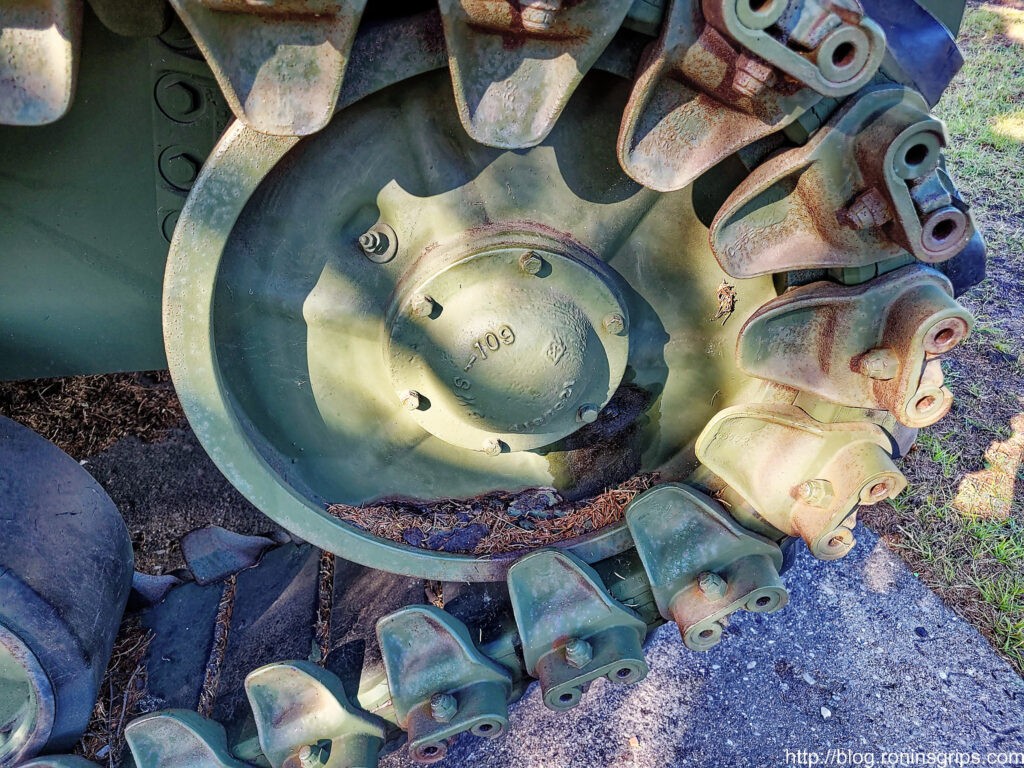


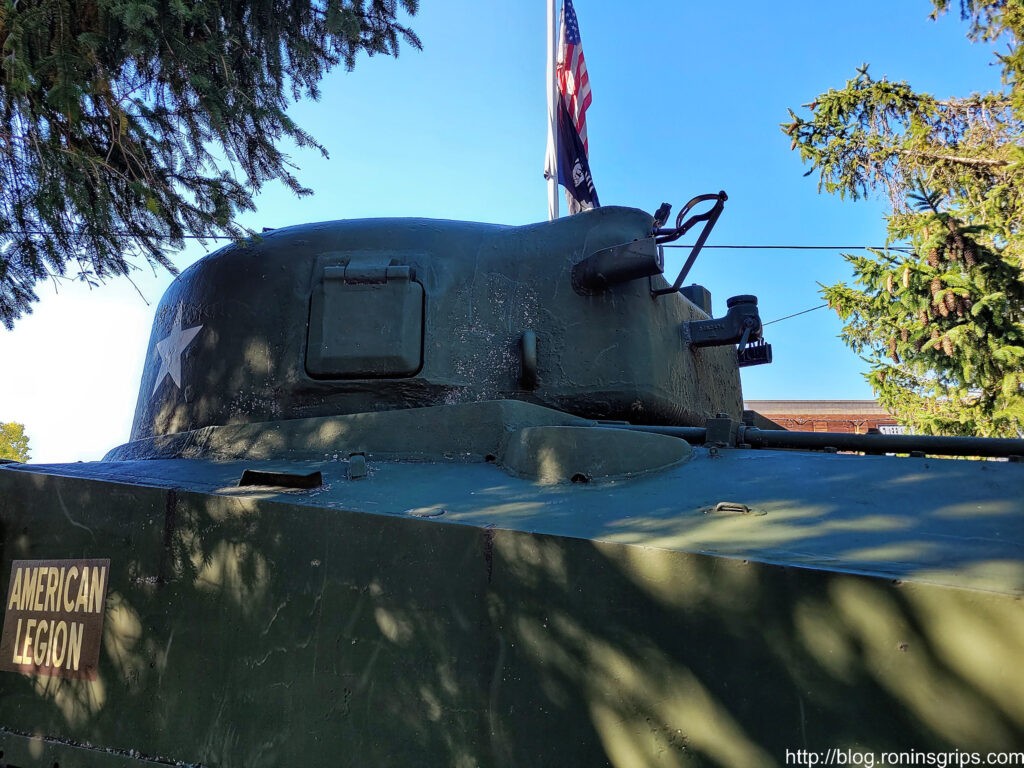






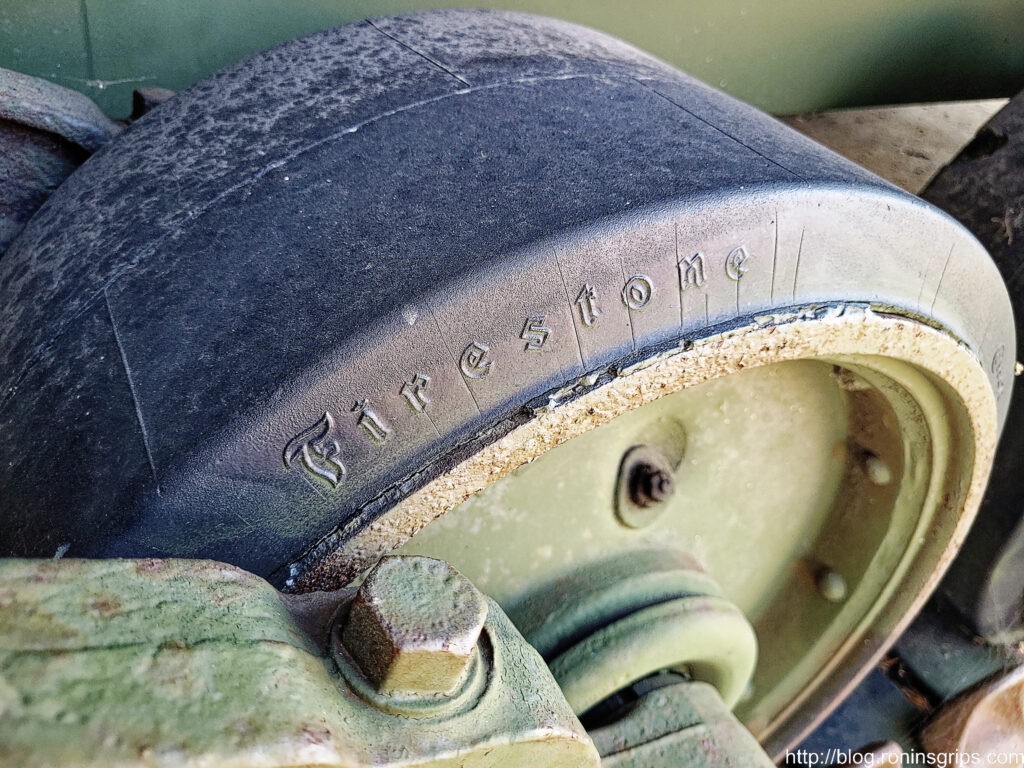
Videos of restored M4A3 Sherman tanks
When I see a piece of history, I always wonder what they looked like when they were actually running / in use. Fortunately, there are many videos of restored tanks that you can watch and here are two:
This one has some interesting coverage of the “top 10 variants” containing narration, stills and original footage:
For More Information
Folks, there is just so much history relating to the Sherman tanks that there is now way I can capture it. Below are links where you can find out a ton more:
- First off, specific to the Mancelona tank, L&P Hannah took a ton of photos of it in 2014 and still have them posted online. The paint had not been refreshed at that point but what is cool is that the photographer took many photos from many angles – way more and better photos than mine. Click here to open a new tab to go to their page.
- This page hosted in France has a lot of info on Ford M4A3 variants.
- A gentleman named David D Jackson has assembled an amazing tribute page to the American Automobile Industry in WWII and he provides photos and a wealth of info – click here to open a tab.
- This page contains a wealth of statistics on Shermans including things like armor thickness, depth of water fording, etc. It’s a treasure trove of info and you have to scroll down to the M4A3 section, Click here.
- Museum of the American GI has a page about their restored M4A3 Sherman that I got some of the stats from regarding dimensions and weight.
- Another great site is TheShermanTank.com – click here to go direct to the M4A3 page.
- The Sherman Register by Hanno Spoelstra is another excellent site.
The above links reflect massive efforts by their curators to capture history before it is lost. I couldn’t have written this post without their shared works.
Summary
It was pretty neat to stop and see the tank I wish I had a ladder or something to get more angles plus I wish I took more photos but you get the general idea. I learned quite a bit while researching this post and only scratched the surface, which is why I listed all of the additional resources above.
If you are on US-131 going through Mancelona, it’s definitely worth the stop. Finally and perhaps most importantly, kudos to the members of American Legion Post 264 for keeping the tank in such good shape and sharing history with us.
If you find this post useful, please share the link on Facebook, with your friends, etc. Your support is much appreciated and if you have any feedback, please email me at in**@*********ps.com. Please note that for links to other websites, we are only paid if there is an affiliate program such as Avantlink, Impact, Amazon and eBay and only if you purchase something. If you’d like to directly contribute towards our continued reporting, please visit our funding page.








